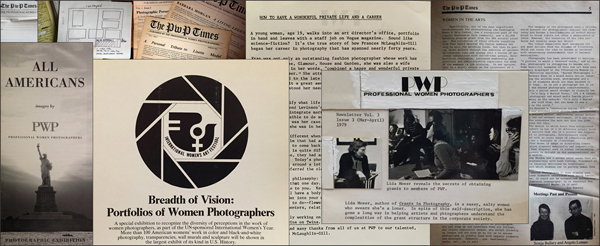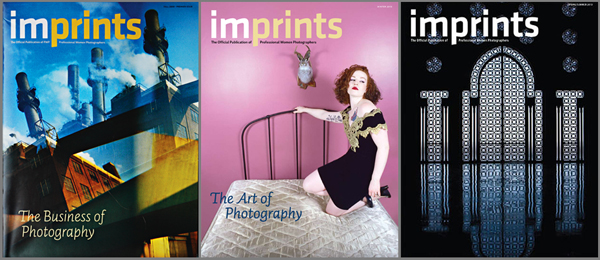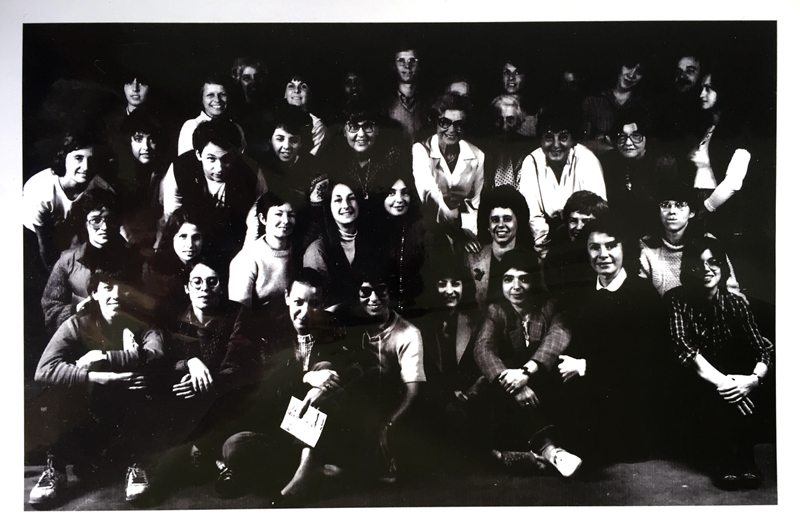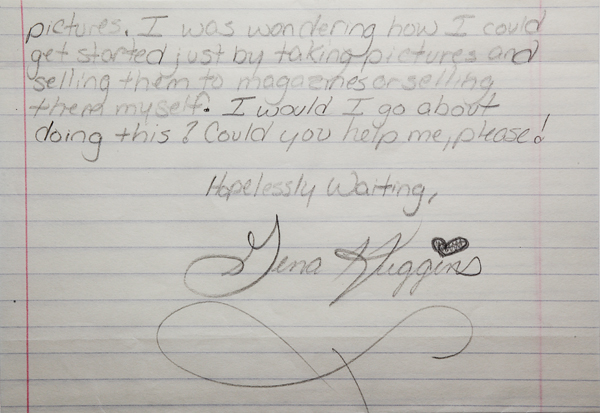30 For 30: Looking Back With Thanks
To celebrate Women’s History Month, we’re featuring items from the PWP Archives* each day on this blog. In looking back, we see not only where we started, but how far photography, women, and the world have come since 1975.
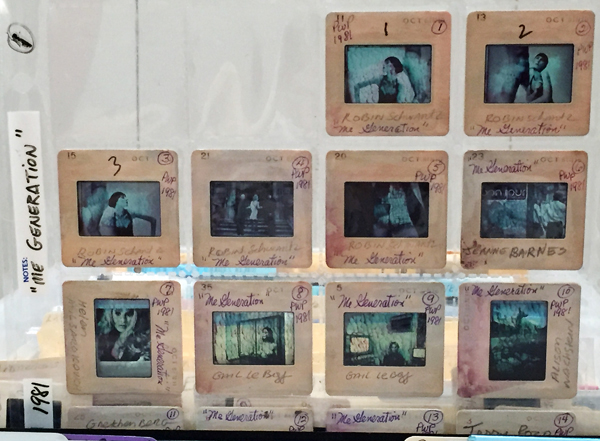 When I first saw the PWP archives in 2009, I almost fainted. The storage unit where they were kept was jammed from top to bottom with lightning fixtures, old exhibition signs, bags of paper plates and party napkins, folders filled with yellowing documents, postcards and publications, some disintegrating into powder. It felt like an episode of Extreme Hoarders, with me in a starring role. I was new to the PWP board and this wasn’t what I expected. Waves of shock, anger, fury and rage swept over me.
When I first saw the PWP archives in 2009, I almost fainted. The storage unit where they were kept was jammed from top to bottom with lightning fixtures, old exhibition signs, bags of paper plates and party napkins, folders filled with yellowing documents, postcards and publications, some disintegrating into powder. It felt like an episode of Extreme Hoarders, with me in a starring role. I was new to the PWP board and this wasn’t what I expected. Waves of shock, anger, fury and rage swept over me.
When they subsided—somewhat—I looked again and realized that in those papers was the story of another time. The 1970s and 80s when PWP got going don’t seem that long ago—not long enough to be history, yet they are.
In the archive was a picture of photography before the digital bang, when serious meant black-and-white, large was 11″x14″, and photo processing labs dotted Chelsea. It was a time when spreading the word meant putting words down on paper, probably with a typewriter. If you wanted to add a picture and create a flyer, you had to futz around with Scotch tape, then erase any telltale lines with a daub or two of correction fluid. It was actual, not virtual, because in 1975, unless you were involved with the Homebrew Club in Menlo Park, California, you didn’t have a personal computer. There was no social media because there was no Internet, only sixty-odd nodes of something called the ARPANET, a government-sponsored project linking large frame computers at high-tech schools.
But the digital wave was coming. The PWP archive tells of women entering photography, of photography rising in the art world, but most of all, it shows the granular sweep of tech into every aspect of modern life. It changed how we think and how we do things.
Looking at dingy PWP show cards from the 1970s I thought how easy it was for me to fine-tune contrast and color on my Mac. I thought about the many font choices I had, even the ability to adjust spacing between individual letters. I was a proud digital girl, maybe too proud. It stunned and humbled me.
I reached out to early PWP leaders like Dannielle Hayes and Dianora Niccolini, heard stories of how they struggled to break into the field and get attention for their work. I thought about how easy it was for me to search online for opportunities, and when those opportunities came, how easy it was to spread the word on Facebook, Instagram and Twitter. No paper, no Wite-Out, no tape.
I began to see things from a wider perspective, and realized that history isn’t just dry words in books, it’s all around us and with us every day. Before an age disappears into memory then dust, it is filled with people and life.
In the rush of progress, in the astonishing beauty of what is now possible in photography, it’s easy to overlook the women who founded PWP and those who wrote so poignantly to it. It’s easy to forget their struggles in our own. Yet they made it better for those who came after, reminding us that lives and actions, however small, matter and add up.
Major joints of history are clear, connective tissue less so, and for too long too many, including women, have been left out. To understand people and their culture, we collect and preserve, but to do that, first need to see their human worth. PWP would like to thank curator Randy Gue and Emory University’s Rose Library for the transformative gift of acknowledgment. We are humbled by it and deeply proud.
Many thanks to Donna Rocco and Vanetta Myers for their expert help with social media; President Fredda Gordon for her enthusiasm and support; Darleen Rubin and Meryl Meisler for giving so generously of their thoughts, time, and wonderful pictures; Stephanie Cohen for her iconic images of PWP; and Dianora Niccolini and Dannielle Hayes for setting something in motion that has touched many lives and continues to this day.
– Catherine Kirkpatrick
*The PWP Archives were acquired by the Stuart A. Rose Manuscript, Archives, & Rare Book Library of Emory University
Links to all the 30 For 30 Women’s History Month blogs:
Help Me Please! Hopelessly Waiting…
Exhibition and Anger
Spreading the Word
Early Ads On Paper
Cards and Letters
A Lady, a Truck, a Singing Dog
Women of Vision
A Show of Their Own
Taking It To the Street
Sisters of Sister Cities
Sold!
Education and More
Face of a Changing City
Digital Enabling
Expanding Walls and Other Possibilities
A Wonderful Life–Lady Style
Branding–the Good, the Bad, and the Ugly
The Great Change Sweeps In
PWP Goes Live!
Honoring the Upcoming
Continuity Through Change
Reaching Out
Eye a Woman Naked
Rapidly Multiplying Alternative Options
Women In the World, As Themselves
Kudos!
Friends Who Overcame and Inspired
Reversing the Gaze
Photography and More
Chicks Telling It Like It Is
Looking Back With Thanks


